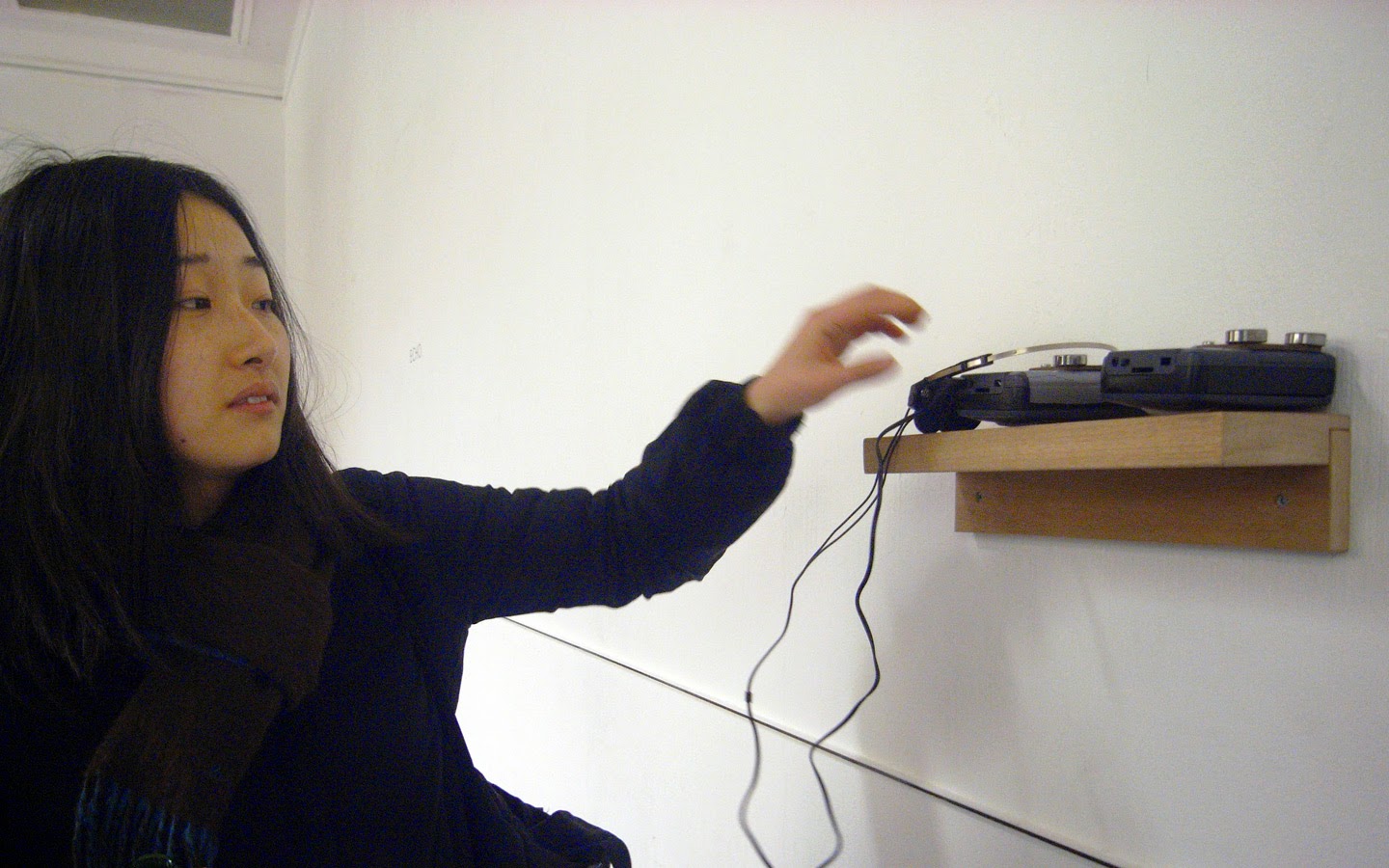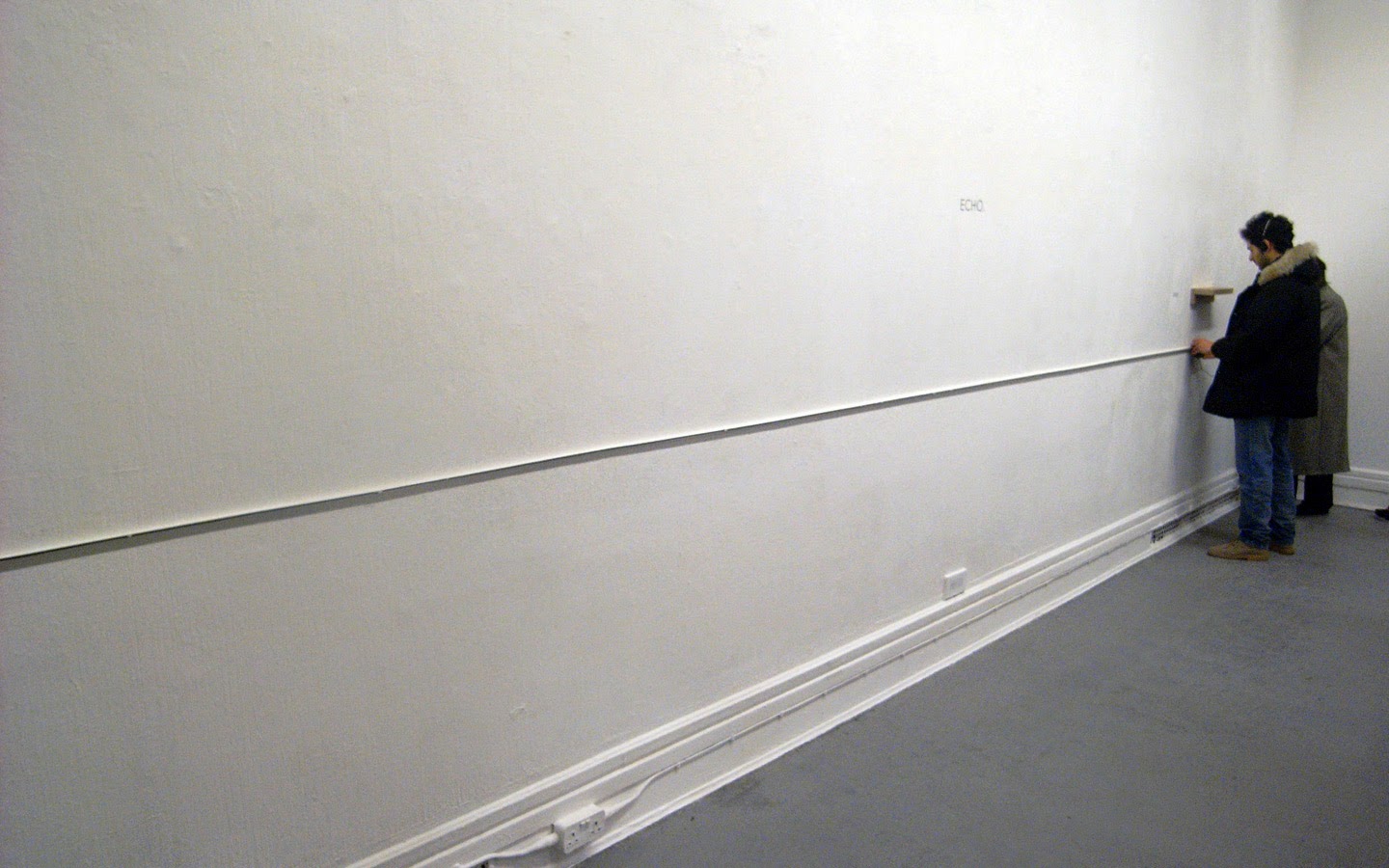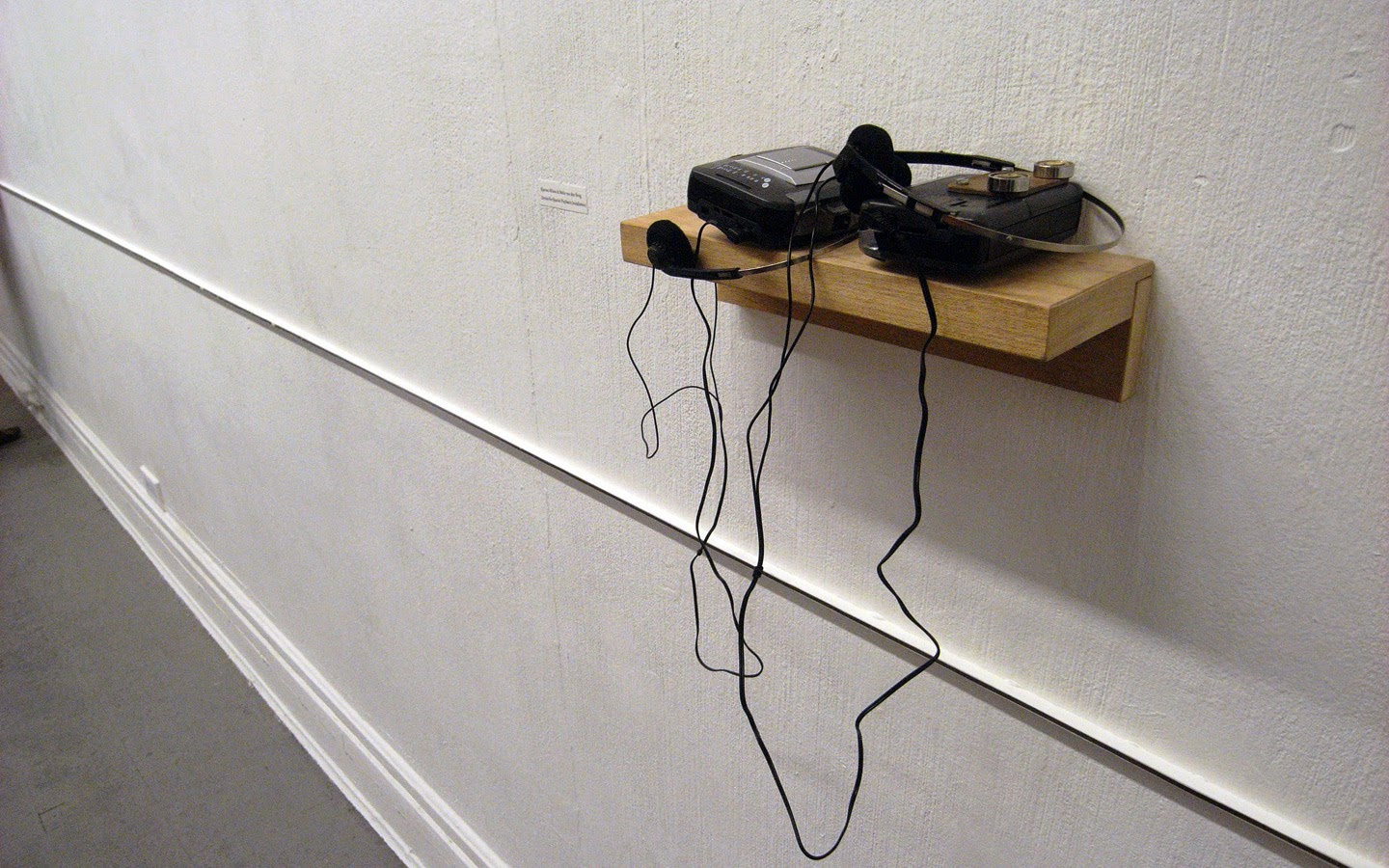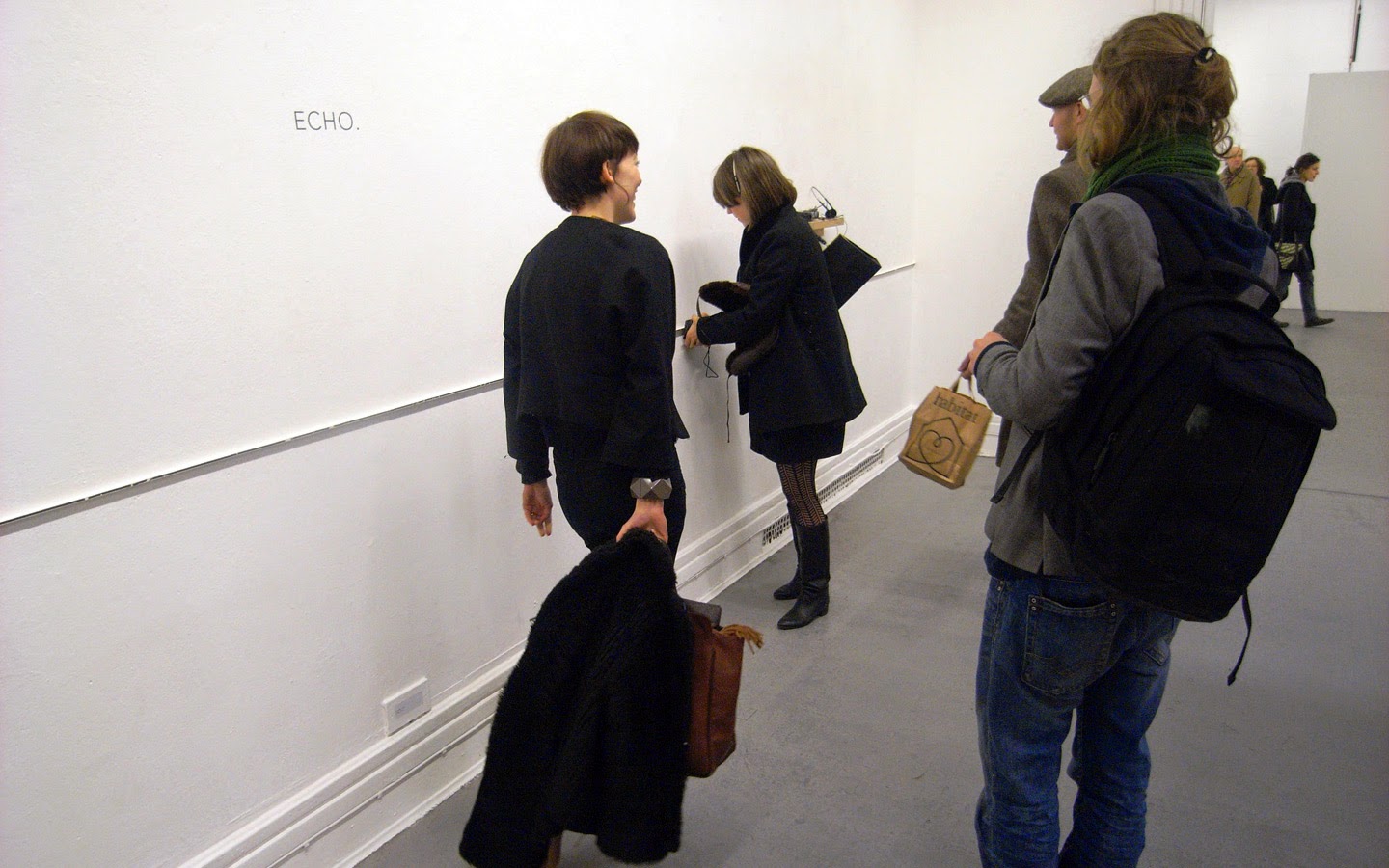This installation, “Device for Spatial Playback,” conceived in collaboration with Melis van den Berg and exhibited at “Nothing but the voice”, Woburn Square Studios, London, UK, presents a compelling interrogation of our perception of time and memory within the spatial realm. Eschewing traditional notions of temporal linearity, the work features a recorded sound imprinted onto a cassette tape that is physically adhered as a continuous line along the gallery wall. This linear tape becomes a tangible representation of the recorded duration, demanding a physical engagement from the listener to unlock its unfolding narrative.
The listener, equipped with headphones connected to a modified portable cassette player retrieved from a designated point on the wall, becomes an active participant in the playback process. Their movement alongside the affixed tape, their pace dictating the progression of the sound being read by the moving tape head, collapses the expected temporal sequence into a spatial exploration. The act of physically traversing the length of the tape becomes a direct translation of temporal experience into spatial distance.
This act of navigating the “temporal labyrinth” formed by the linear tape and the listener’s movement serves as a potent commentary on the relentless pace of modern life. The inability to pause the playback without ceasing physical motion mirrors our contemporary unease with stillness, the perceived impossibility of pausing to truly reflect within the constant acceleration of existence. The listener’s attempt to find the “right” speed, to synchronize their movement with the recorded moment embedded along the tape, becomes a metaphor for our ongoing struggle to align ourselves with the ever-increasing rhythm of the present.
“Device for Spatial Playback” finds its power in the juxtaposition of the mundane and the profound. Utilizing everyday materials – a cassette player, a length of magnetic tape physically present in the space, headphones – the installation democratizes the experience of art while simultaneously prompting deep philosophical inquiry. It compels us to consider the spatiality of time, the role of physical movement in our perception of memory, and the inherent challenges of finding stillness within the dynamism of contemporary life.
AI Podcast describing the art installation:
Materials Used: Headphones, sound recording, modified portable cassette player, cassette tape adhered to the wall, wood (for mounting shelves).
Exhibited at: “Nothing but the voice”, Woburn Square Studios, London, UK (in collaboration with Melis van den Berg).




